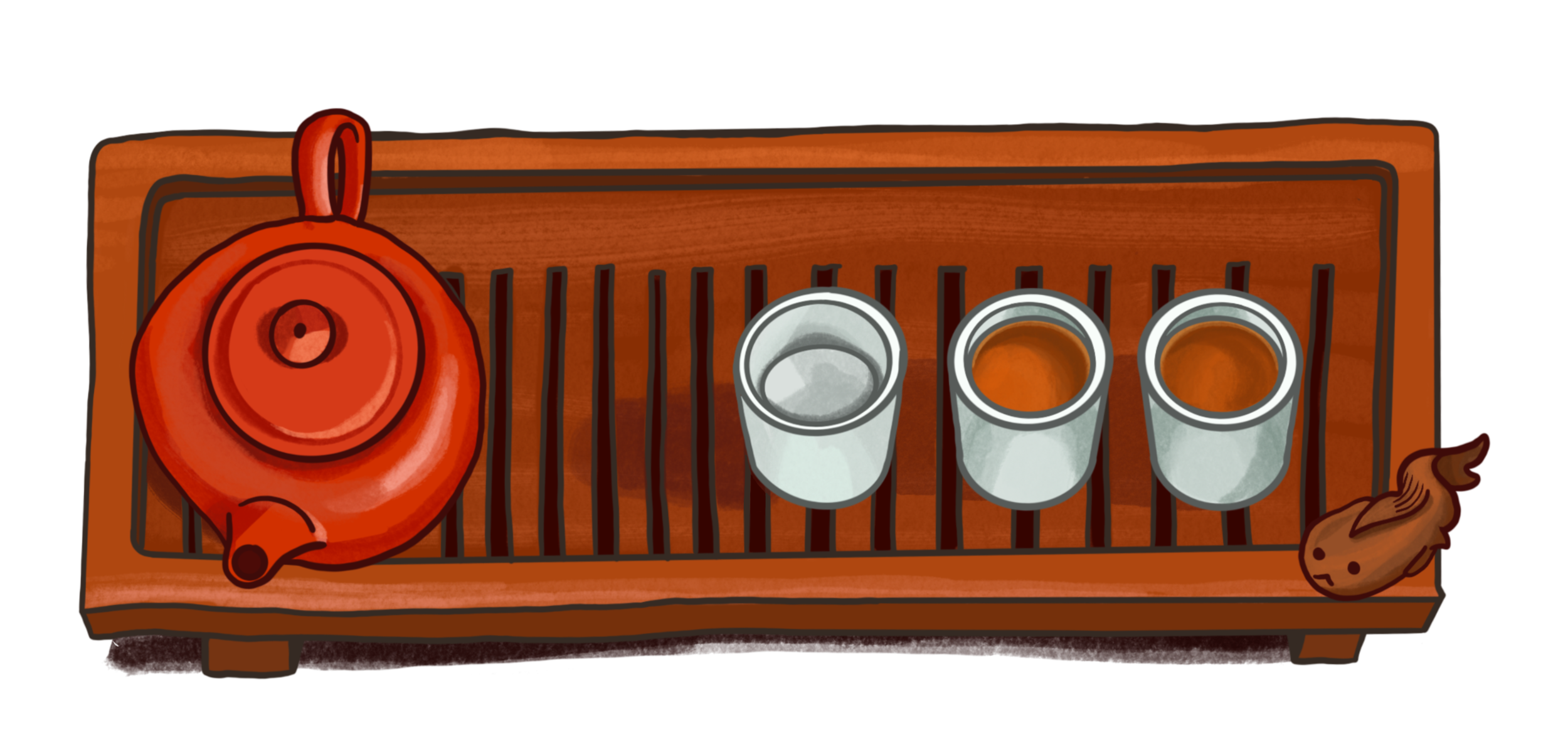A SHORT HISTORY
OF BLACK TEA
Black tea was never supposed to happen. Black tea, which is known as “red tea” in the Far East and “black tea” in the West (we will stick to using the term “black tea” for this article), was not considered a good drinking tea by those making it in China, it was purely an export tea for the West. Green tea always was and for the most part still is the drinking tea of choice in China. According to ancient tea lore, black tea came to be around the 17th century by complete accident. The tea harvest was left withering for too long in the open air after soldiers had marched into the Wuyi mountain area (most agree this area is what’s known today as Tongmuguan, or more specifically Xing Cun) where the tea was being made. In order to not completely waste the tea, the local tea makers decided to roast the oxidized tea with pine wood. This tea is considered by many to be the original black tea now known as Lapsang Souchong. Although some tea historians claim that the first “black” tea was actually what is now know as Wuyi Oolong tea, oolong translated from “wulong” meaning “black dragon”. All we know for sure is that at some point a mystical smoky darkly colored tea began to be traded deep in the Wuyi area and was exported to the West, who deemed it a black tea, and accepted it with open arms.
Lapsang Souchong is roasted over pine wood and is considered to be the first black tea. By Dan Clinton
As the years passed by, the demand from the West, mainly England, for this new black tea coming from China began to rise dramatically. One thing that really proved to spur demand and drastically increase the size of the China to Europe tea trade happened in the late 18th century. A certain British statesman named William Pitt the Younger used his financial savvy to work to lower the tariffs placed on imports such as tea, wine, and tobacco as a way to increase honest trading and reduce an ongoing smuggling problem that had been persisting. As a result of the lower cost of doing business, tea consumption in the West shot up to nearly 30 million pounds a year. It just so happened that the production process of actually making this new black tea was altogether more economical than green or oolong teas. It used less fuel and labour, and the tea makers were able to use different ages of the leaf thus allowing them to utilize more harvests throughout the year to make black tea. Black tea presented itself as the perfect exporting tea for Chinese tea makers to meet the steadily rising demand for tea abroad.
Tea route between England and China. By Dan Clinton
Eventually the British saw the potential in black tea production as well. A famous “plant hunter” named Robert Fortune is famous for having smuggled tea seeds and plants out of China in the mid 19th century, which led to the British setting up tea plantations in Assam, India, thus beginning the steady expansion of England’s tea empire.* They were able to vastly scale the production of black tea to the point where little to no hand-crafting is required at all, and set up large centralized factories with machinery that would churn out tea by the thousands of pounds. Throughout the years, Britain was influential in expanding mass black tea production to places such as Ceylon (Sri Lanka), Bengal (Bangladesh), Kenya, Malawi, and today there are even tea plantations in the US States of South Carolina and Mississippi among others. Nepal also has risen up as a major black tea producer over the years having taken cues from the tea estates in India.
A specialty black tea service on a wooden tea tray. By Dan Clinton
Over the years, black tea has scaled and commoditized to meet market demands across the globe. Often, higher quantities and lower prices are sought out over superior taste, unique variety, and quality production. However, there are many who still seek out speciality teas, and demand has been preserved and is rising for the quality of taste that can only come from teas that have been grown and handcrafted with the utmost skill and intention. These teas are often referred to as Gongfu Cha, which basically means tea requiring art, skill, and effort. It is encouraging to know, that in 2020, one can still find and enjoy truly incredible black teas of character that are being made with traditional growing and crafting methods. All we can say is that, when you come across a carefully hand-crafted black tea grown in the best climates, you can taste the difference. The texture, the complexity, the richness, the lingering sweetness, are all hallmarks of a truly remarkably made black tea. They’re out there, and the adventure of finding them is well worth it.
* A book worth reading: For All the Tea in China






